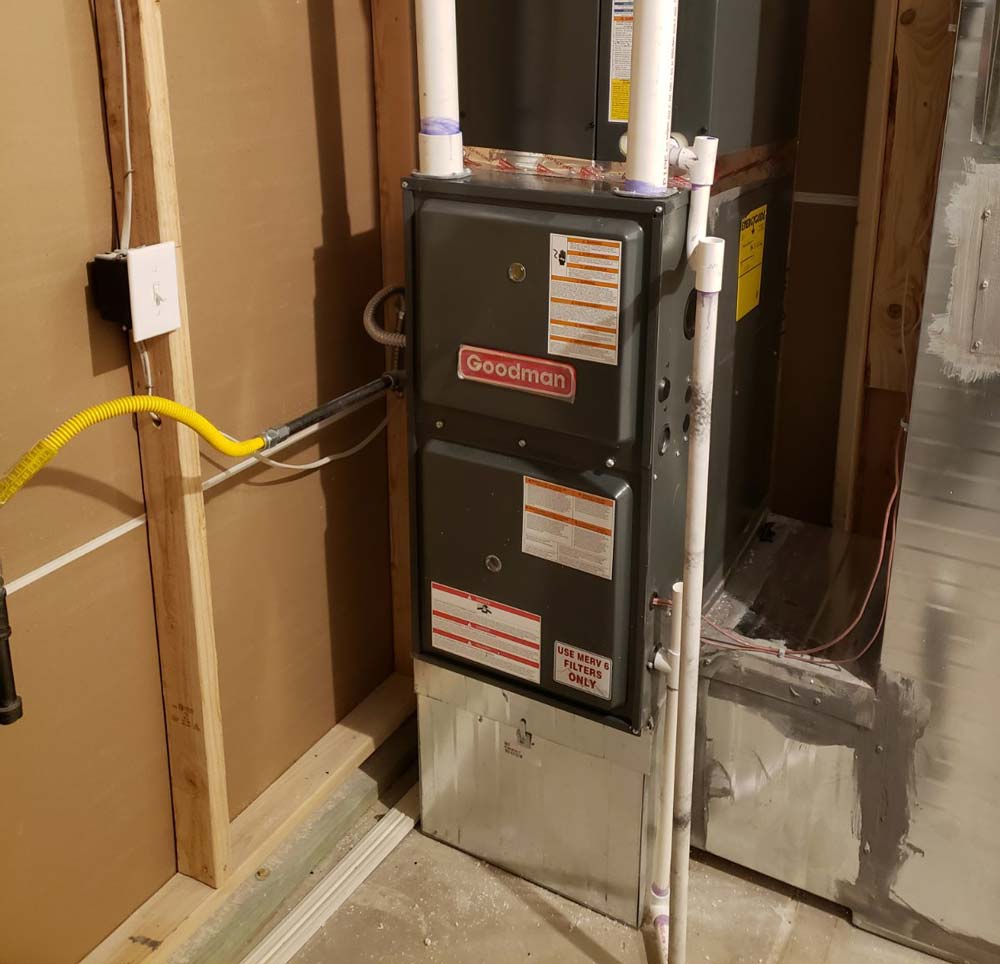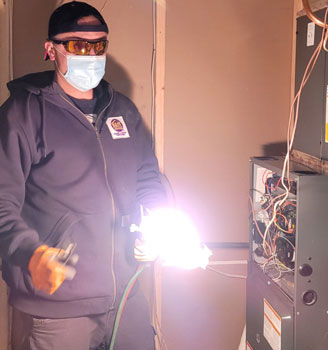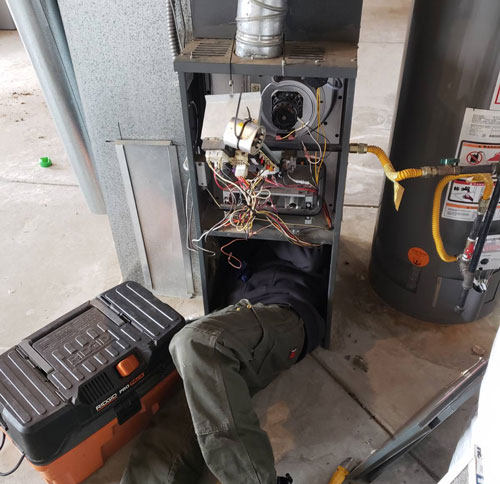
Replacing the heating system is a costly but necessary measure that provides heat the house without the risk of fire and smoke. Safety and smooth operation of heating system depend on the appropriate installation protocol. Therefore, only the experts should deal with the replacement of heating. Best Heating Cooling & Air, a NATE certified HVAC contractor, will replace your heating system quickly, according to all the protocols, and at an affordable price.
Signs you need to replace your home heating system
Heating system goes out of function slowly. You will see some signs before the actual accident. Small issues evoke big ones. If there are some disruptions, engage a qualified contractor to replace the unit. We want to get into some issues, which are typical signs for soon heating replacement.
Utility bills hike each season
Hiking electricity bills are the first sign of depreciation in heating unit as the system balances its lower capacity with increased energy consumption. If bills increase every year, the cost of replacing the heating system will quickly pay off. The new energy-efficient unit is more beneficial than paying extra for energy overuse before the heating collapse anyway.
You are too often adjust your thermostat

If the thermostat switches off frequently and the temperature has to be reset, the circulation pump gets overloaded and depreciates faster. Switching the thermostat on and off more than usually leads to an increase in utility bills. Replacing the thermostat is quite expensive, so you should consider the repair. To prevent thermostat dysfunction and reduce the pressure on pumping unit during the cold season, follow our simple recommendations:
- do not change temperature settings too often;
- do not raise the temperature maximum to speed up the heating;
- install automatically adjusting thermostats;
- set the heating temperature 10–15 degrees lower in case you are not at home for a long as this saves up to 15% of energy consumption.
You pay the bill for frequent repairs
If you engage the repair service more than twice during the heating season, you might face a disruption in the near future. The reasons for frequent breakdowns are different. Those might be neglectful installation and wire net laying out, running out capacity or manufacture defect. In any case, we advise not to spend to fix those issues even if there are ways as replacing the heating would be more beneficial than the total cost of repairs.
Heat distribution in your house is not steady
If you notice “cold spots” because of poor air circulation and damaged thermal insulation that evoked cracks in channels, repair is the solution. The issue gains complexity in case of the misdistribution of heat caused by misplaced thermostat or low power of the heat source. The wrong furnace or boiler must to be replaced.
Your heating system works intermittently
Intermittent (5-8 times per hour or more) work and frequent restarts may lead to quick depreciation and hike in utility bills. In the very cold premise, the usual cycle will come to normal as the temperature goes higher. However, you might want to check up the thermal insulation and thermostat settings.
Clogging of the chimney, air filters and smoke detectors also leads to heating dysfunction when emergency detector alert. Sometimes the overheated engine is the reason of an issue, the end switcher stops the transmission and the furnace is power off. If intermittent work is a product of design mistakes and insufficient heater power, only replacement of heating system can solve it.

Your heater produce unusual noise when working

Cracks, knocks, clicks, howls and other noise during the work of the furnace are the alerts. The noise may be the result of the matter stucked in the fan blades. Switch off and checkup the unit to avoid the engine damage. If you hear a loud bang like a shot when you turn on the stove, you may have a cracked heat exchanger, which can lead to a carbon monoxide leak. The solution is to immediately turn off the stove and call the maintenance.
Your heater is outdated
The average service life of the furnace is 15–20 years. It depends on the brand, power, wire net and the model of the unit itself. If the stove has been in use for more than 12 years, the heating system should be replaced ASAP, even if had not bother you by now.
An old unit is not only depreciating, usually it has an outdated functionality. Innovative energy-saving models are more cost-effective and pay off quickly. BHC&Air helps to reduce the cost of major repairs. Xcel Energy Partner Program allows us to optimize the invoice for you as well as buy a certified unit with a discount.
What are the options for a heating system?
The most popular heating in the US is a gas stove. The electric stoves are less common, the liquid and solid fuel stoves are rare as well as the combined models. The main advantages of furnace heating are fast start, affordable cost, compact design and simple design.
However, there are cons, such as heat loss and the threat of leakage of gas and toxic fumes. Suitable design of heating systems and professional installation of the furnace eliminate the threats and increase the productivity of the unit. The cost of replacing the furnace unit depends on the brand, model and its capacity as well as type of installation and the fuel:
- installation of a gas oven without channeling – $1800-$4000;
- installation and setting up of an electric furnace – $1850-$2700;
- installation of a liquid fuel stove – $4600-$6900.
Boiler heating is more comfortable for those allergic and people with respiratory diseases, as in this case the amount of dust and soot is less. The heat generated by burning fossil fuels or biogas is distributed through radiators. The cost of installation varies widely, from $2,000 to $20,000. Heating units do not take extra space and are smoothly integrated into the interior. However, additional adjustments may be needed to improve the distribution of heat throughout the house.
Underfloor heating systems are layered under floor finish and use infrared radiation or heated water as a heat source. As a result, heat is distributed better, but you might find it costly to buy heat-resistant finishes. The underfloor heating costs from $16 per sq. foot. The cost of IR systems in cold regions is higher than the cost of underfloor water heating.
The heat pump is one of the most advanced and cost saving “green” technologies in moderate climate regions. A heat pump does not require pumping, which reduces heat losses. The renewable resources such as outdoor air, water and geothermal energy serve as source of heat. The system has air cooling option for summer, combining the functions of an air conditioner and a ventilation unit.
Electric heaters do a good job of heating small spaces during the off-season. However, they cannot replace conventional central heating. Electric heaters are relatively inexpensive, ranging from $15 to $1,000 for a portable model and $80 to $1,000 for a wall-mounted unit. However, it is not that popular because of overconsumption of energy, while serving as a temporary solution. Eight hours of operation of a low-power portable heater will add some $ 43 to the monthly electricity bill.
If you hesitate on the choice of heating system, BHC&Air experts are ready to advise you on any issues related to the design of heating systems and the choice of energy efficient units. Leave a request on our website or contact the manager to let us find a solution for your home that will warm you in winter, save your money and fit into your design.




